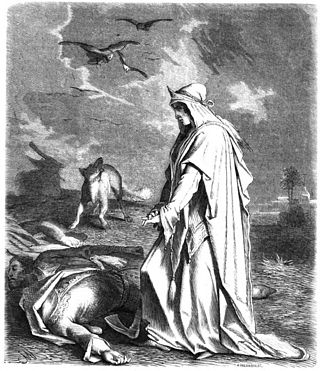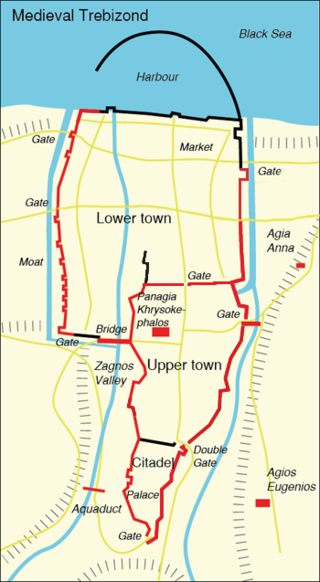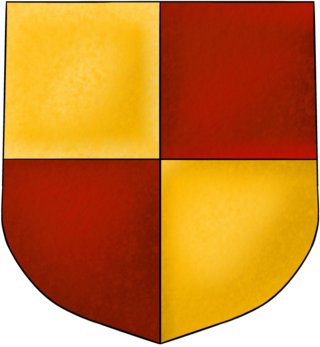This article has multiple issues. Please help improve it or discuss these issues on the talk page . (Learn how and when to remove these template messages)
|
Laonikos Chalkokondyles | |
|---|---|
 Early modern painting of Laonikos Chalkokondyles | |
| Born | c. 1430 |
| Died | c. 1470 |
| Nationality | Greek |
| Occupation | Historian |
| Notable work | Histories in ten books |
| Relatives | Demetrios Chalkokondyles |
Laonikos Chalkokondyles, Latinized as Laonicus Chalcocondyles (Greek : Λαόνικος Χαλκοκονδύλης; [lower-alpha 1] c. 1430 – c. 1470) [lower-alpha 2] was a Byzantine Greek historian from Athens. He is known for his Demonstrations of Histories in ten books, which record the last 150 years of the Byzantine Empire.
Contents
- Life
- Portrayals in fiction
- The Histories of Chalkokondyles
- See also
- Notes
- References
- Bibliography
- Further reading
- External links
Laonikos Chalkokondyles was born to an aristocratic family in Florentine Athens circa 1430-32. Laonikos’ birth name was Nikolaos but he adopted the classical sounding anagram Laonikos to emphasize his classical Greek learning and interests. This was an intellectual trend that Laonikos shared with other members of his intellectual circle in Byzantine Mistra such as Pletho and Bessarion. [1] In the first half of the fifteenth century, Athens was under the rule of the Florentine family of the Acciajuoli to whom the Chalkokondyli were connected by marriage ties. [2]
In his seminal work Apodeixis Historion (Display of Histories), Laonikis claims that his father George Chalkokondyles visited the Ottoman Sultan Murad II (r. 1421-1444, 1446-1451) twice on diplomatic missions. George had attempted to gain the throne in Athens along with the widow of the former Florentine Duke of Athens and had travelled to the Ottoman court for Murad II’s endorsement. The mission was unsuccessful and the Chalkokondyli family were exiled from Athens circa 1435. [3] Laonikos Chalkokondyles and his family relocated to Byzantine Mistra. Constantine Palaiologos, Despot of the Peloponnesus at this time and future Byzantine Emperor during 1453, sent George Chalkokondyles on a second mission to Murad II which aimed to restore the Duchy of Athens to Byzantine rule. [4] George was imprisoned by the Ottomans during this mission. The unsuccessful attempt led to the Ottoman military campaign against the Peloponnesus in 1446. It has been proposed that Laonikos’ narrative of the Ottoman invasion in 1446 is an eyewitness account.
In Mistra, Laonikos became the student of George Gemistos Pletho, a Platonist philosopher and Judge General of the Byzantine Empire. At the court of the Despots in Mistra, Pletho was an advisor to Byzantine rulers and taught a wide ranging group of students. Among Pletho’s students, there were Bessarion and Isidore, the two future Cardinals of the Catholic Church, Mark Eugenikos, the leader of Orthodox factions who resisted Church Union with Rome, Michael Apostolis, and the self-professed sun worshipper Demetrios Raoul Kabakes. Kabakes was instrumental in disseminating the remaining portions of Pletho’s secret tract Nomoi (Laws) in Europe. The Nomoi had been burned by the Ottoman Patriarch George Gennadios Scholarios, Pletho’s Aristotelian arch-enemy and anti-Unionist theologian, following the Platonist philosopher’s death when the Patriarch was sent the tract c. 1455. In connection with the autodafe, Scholarios had commented that Pletho had become a Hellene (that is pagan) as a result of his education under a Hellenizing Jewish thinker at an unspecified barbarian city in his youth. Historians have argued that this city must have been either Ottoman Bursa or Edirne without conclusive evidence; it could have been any one of the Muslim courts in the eastern Mediterranean.
There are echoes of this religious controversy in the Apodeixis. In an intriguing and laconic passage, Laonikos defined Hellenic religion as polytheistic ritual belief in the gods Zeus, Hera, Apollo and Artemis and wrote that it was only recently that the Bohemians stopped worshiping fire and the sun while the pagan religion was still practiced in various locations in the world in the fifteenth century. Laonikos’ narrative on religious practices and beliefs, both Islam as well as Christianity, is conspicuous for its omission of metaphysics and for his definition of religion as a cultural and administrative system that regulates societies. A passage concerning Bessarion, Isidore, Mark Eugenikos, and Gennadios Scholarios details the deliberations at the Council of Florence-Ferrara in 1438-9. At the Council the Byzantines and the Latins aimed to mend the Schism between the Orthodox and the Catholic Churches. In these passages and elsewhere, Laonikos systematically employs the classical term “threskeia” (religious practice) which has connotations of ritual and cult and never uses the term “pistos” (faith). The latter term was more commonly used in connection with religion in Byzantium.
Laonikos’ instruction with Pletho in Mistra is revealed in a diary entry of Cyriac of Ancona from late July-early August 1447. The Italian merchant and humanist who is sometimes also referred to as the father of modern archaeology, was visiting Pletho in Mistra when he met “the gifted young Athenian, Nikolaos Chalkokondyles.... remarkably learned in both Latin and Greek literature.” Late medieval Greece was a hybrid society where bilingualism was a common feature and contacts with the west were frequent. Laonikos’ detailed presentation of Italian city-states and western polities, intricate knowledge of current and past events in the west, admiration for the Greek Cardinals Bessarion and Isidore who had migrated to Italy, and capacity for salacious gossip from western urban centers reveal that he was a member of the Franko-Greek society of late medieval Greece. In fact, Laonikos was proud to draw the readers’ attention to this, referring to himself as “Laonikos the Athenian” in the opening words of the Apodeixis.
Interestingly and tellingly, Laonikos does not openly reference Pletho in the Apodeixis. However, Laonikos’ adoption of Herodotus as historiographical model, the explicit emphasis on Hellenic identity in the Apodeixis, the articulation of a long historical memory extending to mythical time, the sympathetic presentation of Islam and the prophet Mohammed, and interest in oracular knowledge are similar in tenor to Pletho’s teachings and writings.
Laonikos’ methodological contribution to Renaissance historiography was his adoption of Herodotus as model. Although Herodotus was taught in Byzantine schools as a linguistic model for Ionian Greek, he was denigrated as an unreliable historian with a penchant for the fabulous in late antiquity and the middle ages. Furthermore, the classical historian’s formulation of the tyrannical Persian empire in opposition to the free Greek city-states was not in line with Byzantine political ideology with its claim to just universal Empire. In the aftermath of 1453 and the eventual incorporation of all Byzantine territories into the centralizing Ottoman state under Mehmed II, Herodotus emerged as a useful historiographical model to describe the Ottomans. Further, Laonikos’ Herodotean model of Empire should be evaluated in tandem with Mehmed II’s imperial claims. These claims were applauded in the History of Kritoboulos, the contemporary Greek historian and bureaucrat. Kritoboulos dedicated and presented the Greek autograph manuscript of his History to the Ottoman Sultan himself, illustrating the competing claims on the Byzantine heritage in the latter part of the fifteenth century.
Laonikos must have studied the classical historian of the Persian Wars closely with Pletho in Mistra as a fourteenth-century Byzantine manuscript of Herodotus (Plut. Gr. 70.06 in the Laurentian Library in Florence) was owned by both teacher and student. Laonikos inserted an epigraph concerning the ancient historian on the last folio of this manuscript, writing that Herodotus’ History was composed with “divine guidance.” This particular manuscript was copied multiple times by Pletho’s disciples, among them Bessarion and Kabakes. Textual interventions - such as the insertion of alternating astronomical symbols of the sun and the moon in the margins and the marking of oracular statements in the manuscript - and the close links between Plut. Gr. 70.06 and other manuscripts associated with the Mistra intellectuals, demonstrate that Herodotus was not merely prized as a classical historian. In the epigraph, Laonikos praised Herodotus as a “herald” who described in detail the deeds of the Hellenes. Laonikos also wrote that he was amazed that the Hellenes “displayed a virtue that was greater than human”. Laonikos’ word choice xrhsamenoi (display), to refer to the Hellenes, is also used to describe oracular statements. In fact, the ancient historian Herodotus had cosmic significance for the Mistra intellectuals at a time when eschatological beliefs were widespread.
Laonikos’ adoption of Herodotus was systematic, thorough and methodical. He adopted the organizational scheme of the ancient historian as well as Herodotus’ approach to source material. Arnaldo Momigliano has distinguished a Herodotean approach from the approach advocated by Thucydides, whose strict focus was on contemporary political events. Herodotus, on the other hand, whose main narrative thread focused on the clash between the Persians and the Hellenes that occurred in an earlier generation than when the historian was composing his work, necessarily had to rely on oral reports from multiple sources. Moreover, Herodotus’ numerous excursuses into cultural geography necessitated his reliance on foreign informants. Similarly, Laonikos constructed his narrative around the wars between the Ottomans and the Byzantines and in the process relied on Ottoman Turkish informants for political events, ethnographic details, origin stories and much else. Laonikos incorporated extensive material on the kinship groups, language, religious beliefs, and customs of the Ottoman Turks in line with Herodotus. A short section on the Ottoman custom of lighting military camp fires during sieges is included in the excerpt below.
In the very long tradition of Byzantine historiography, such primary focus on the “other” and the “barbarian” was unprecedented with the exception of Kritoboulos. With a composition date after 1464, Laonikos was one of the earliest narrative sources on Ottoman history in any language and the only witness for many of the events and personalities he recorded. While Laonikos depicted Ottoman Sultan Murad II in a favorable light, his son Mehmed II the Conqueror was portrayed as an oriental tyrant par excellence, bringing to mind Herodotus’ representations of Darius and Xerxes. Laonikos relied on Ottoman informants who maintained a critical distance to the Ottoman court and the narrative contains echoes of the kind of Ottoman social criticism of Mehmed II’s reign, only included in the Ottoman historiographical tradition in the late fifteenth and sixteenth centuries.
While the criticism of Mehmed II’s social and political policies was not put down to paper in the east during the Sultan’s reign, they circulated widely in the west thanks to the Apodeixis. There are more than 30 manuscripts of the Apodeixis from the fifteenth and sixteenth centuries, demonstrating its popularity. It was first printed in 1556 in Latin translation along with other tracts on the Ottomans. Catering to the European demand for information on the Ottomans, the Latin translation was reprinted numerous times. French translations and editions appeared in the sixteenth and seventeenth centuries, some of them with illustrations and supplementary material. The original Greek text appeared later than its Latin and French translations in a bilingual edition printed in 1615 in Geneva. Laonikos’ original vision of the Ottomans as oriental tyranny and his revival of Herodotus historiographical model would endure and mold subsequent western engagements with the east.













